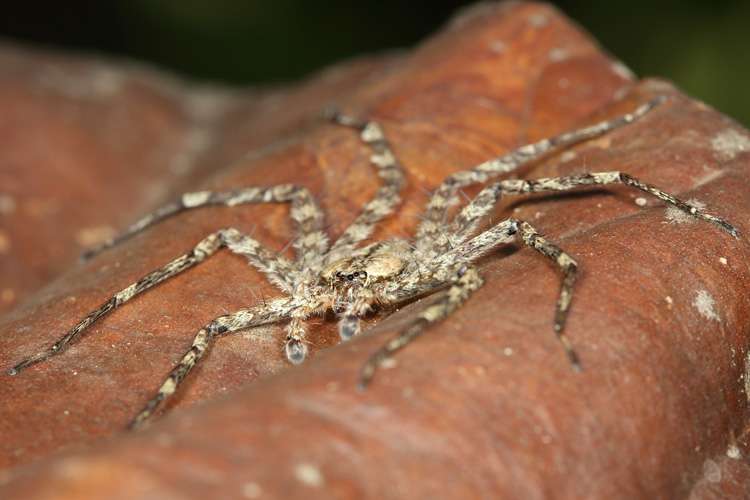Biologists discover skydiving spiders in South American forests (w/ Video)

Arachnophobes fearful of spiders jumping, creeping or falling into their beds now have something new to worry about. Some spiders might also glide in through the window.
A group of biologists working in Panama and Peru have discovered a type of nocturnal hunting spider, about two inches across, that is able to steer while falling, much like a wingsuit flyer, in order to return to the tree from which it fell.
The spider joins a small number of non-flying insects – ants, bristletails and some insect larvae – known to have the ability to maneuver while falling instead of dropping like a rock, according to Robert Dudley, a professor of integrative biology at the University of California, Berkeley, and one of the authors of a paper about the spider appearing this week in the journal Interface of the Royal Society.
"My guess is that many animals living in the trees are good at aerial gliding, from snakes and lizards to ants and now spiders," Dudley said. "If a predator comes along, it frees the animal to jump if it has a time-tested way of gliding to the nearest tree rather than landing in the understory or in a stream."
Forest floor predators or fish would quickly make a meal of a grounded tree-dweller.
The spider, from the genus Selenops, is the only arachnid they found that was able to do this. Other arachnids – scorpions, pseudoscorpions, whip scorpions and even other types of spiders – merely plummeted to earth.
From gliding to flying
Dudley and Stephen Yanoviak, a professor of biology at the University of Louisville in Kentucky, have been studying gliding insects in tropical forests for more than a decade, after discovering a group of ants that unfailingly land on a tree when accidentally brushed off a branch. This led them to toss from a tree every non-flying arthropod they could find to see which animals glided.
"As far as adult arthropods are concerned, only ants, bristletails and spiders use directed aerial descent," Yanoviak said. "However, the wingless immature stages of various insects that are winged as adults can also glide really well. These include cockroaches, mantids, katydids, stick insects and true bugs."
Dudley is interested in directed aerial descent because controlled gliding, he thinks, may have been the predecessor to flying, as animals learned how to use their arms and legs to gain lift in addition to maneuvering in freefall.
"This type of aerial behavior preceded the origin of wings," he said.
The 59 individual Selenops spiders they studied were all well-adapted to skydiving. They are "wafer thin," Dudley said, and flexible; they maneuver by spreading their legs wide in order to use lift and drag to steer themselves toward the tree trunk when they fall. If they fall upside down, they're able to right themselves in midair. The biologists occasionally saw spiders bounce off the trunk, recover and maneuver back to the trunk a second time for a successful landing.
"This study, like the first report of gliding ants, raises many questions that are wide open for further study." Yanoviak said. "For instance, how acute is the vision of these spiders? How do they target a tree? What is the effect of their hairs or spines on aerodynamic performance?"
By studying these unusual types of animal behavior, Dudley said, biologists may be able to supply engineers with novel ideas for robots that can right themselves when falling.
More information: "Arachnid aloft: directed aerial descent in neotropical canopy spiders" DOI: 10.1098/rsif.2015.0534
Journal information: Journal of the Royal Society Interface
Provided by University of California - Berkeley




















